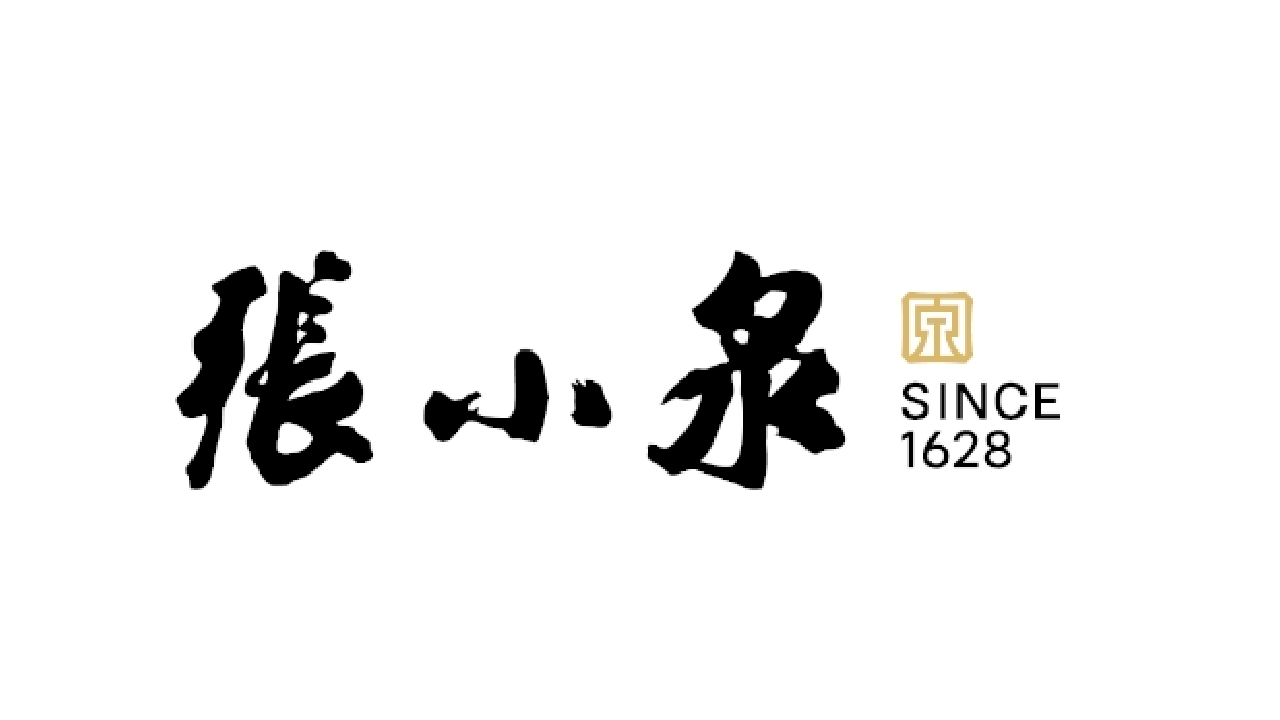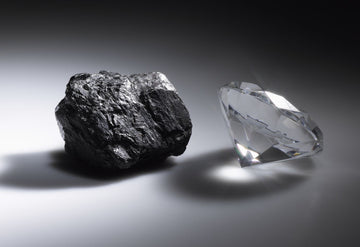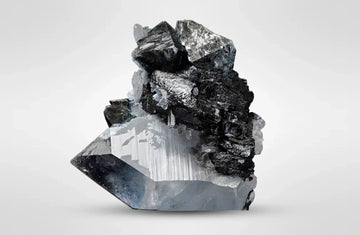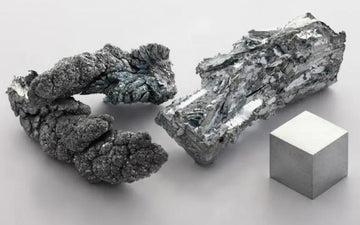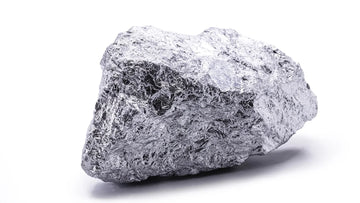In the world of kitchen tools, there exists a simple element that determines the fate of every knife. Like the way a person's character is formed by their experiences, a knife's soul is shaped by a small but powerful ingredient: carbon. This humble element, making up just a fraction of a percentage of the knife's weight, decides whether it will serve faithfully for decades or disappoint after a few meals, whether it will glide through tomatoes like they're made of air or crush them like a dull stone.
Carbon Percentage in Kitchen Knives: The Essential Element Behind Cutting Performance
In the village of materials that make up a kitchen knife, iron is the common worker, making up 70-80% of the population. But carbon is the wise elder, who though small in number—sometimes less than one percent—changes how everyone lives and works. When carbon enters the steel, it forms iron carbide (Fe3C), creating a compound harder and stronger than plain iron could ever be on its own.

This is not so different from how a single teacher might transform an entire classroom, or how a small idea can change a person's life. The carbon, despite its modest presence, reshapes everything around it, determining how sharp the knife can become and how long it will stay that way.
High Carbon Steel vs. Low Carbon Steel Kitchen Knives: Understanding the Differences
Kitchen knives, like people, come from different families, each with its own character:
-
Low carbon steel kitchen knives (less than 0.30% carbon) are like young, flexible people who bend rather than break under pressure. They're forgiving but lack the strength to hold their edge for long.
-
Medium carbon steel kitchen knives (0.30-0.60% carbon) find a middle path, like adults who have learned to balance flexibility with strength.
-
High carbon steel kitchen knives (0.60-1.5% carbon) are like elders who have gained wisdom and strength through experience. They hold their edge with remarkable tenacity but have grown less flexible with age.
-
Ultra-high carbon steel kitchen knives (1.25-2% carbon) have reached an extreme state of hardness, like a person who has become so rigid in their ways that while incredibly strong in some aspects, they might break rather than bend when faced with unexpected challenges.

The knives with carbon content exceeding 1% achieve hardness ratings of 58 or higher on the Rockwell scale—a measurement that reflects their resistance to deformation, like a person's resolve in the face of adversity.
How Carbon Content Affects Kitchen Knife Edge Retention and Sharpness
The most visible gift carbon brings to a knife is the ability to stay sharp. Like the difference between a person who remembers everything they've ever learned and one who forgets lessons quickly, high-carbon knives remember their sharpness long after low-carbon knives have forgotten theirs.
Carbon Steel Kitchen Knife Sharpness: Superior Edge Retention
When America's Test Kitchen put knives through trials that would exhaust even the most patient cook—cutting through chickens, dicing mountains of onions, slicing paper until their edges dulled—they discovered what many chefs already knew: high-carbon steel knives maintained their cutting edge longer than their stainless steel relatives.
This edge retention is not unlike the stamina of a marathon runner compared to a sprinter. The high-carbon knife continues performing at a high level long after others have tired. For professional chefs who might make thousands of cuts in a single day, this endurance is not a luxury but a necessity.
Carbon Steel Kitchen Knife Sharpening: Responsive to Honing and Sharpening
Beyond staying sharp longer, high-carbon knives also respond better to sharpening, like a gifted student who quickly grasps new lessons. The higher carbon content makes the steel more receptive to the sharpening stone, allowing users to create edges so keen they could split a human hair.
This quality is particularly precious for tasks requiring surgical precision—slicing fish for sashimi where the knife must glide through flesh without crushing a single cell, or turning vegetables into transparent sheets that hold their shape while revealing what lies beneath them.
High Carbon Kitchen Knife Disadvantages: Understanding the Trade-offs
But like all things in life, carbon's gifts come with costs. The same elements that make high-carbon knives exceptional also create challenges that users must accept and address.
Carbon Steel Knife Brittleness: The Fragility of Hardness
As carbon content increases, steel becomes not only harder but more brittle, like a person who has become so rigid in their principles that they cannot adapt when life requires flexibility. High-carbon knives are more prone to chipping when they encounter bones, frozen foods, or when carelessly dropped against hard surfaces.
This brittleness manifests as small chips along the edge—tiny fractures that appear when the knife faces stresses it cannot absorb. While lower-carbon knives might bend slightly and recover, high-carbon edges break rather than yield. This is why sushi chefs, who use some of the highest-carbon knives, work with such deliberate, careful movements—not merely from respect for their craft, but from understanding their tools' limitations.
Carbon Steel Knife Maintenance: The Need for Care and Attention
High-carbon knives also demand more attention than their stainless counterparts. They contain minimal chromium—the element that provides corrosion resistance—making them like people who lack natural immunity to disease and must therefore take extra precautions.
These knives require immediate drying after washing, protection from acidic foods, and regular oiling to maintain their surface. Leave them wet for too long, and they develop rust. Cut a lemon and fail to clean the blade, and it will stain. This reactivity represents a relationship rather than a transaction—the knife gives exceptional performance but asks for care in return.
Carbon Steel Knife Patina: The Living Character of a Well-Used Blade
One distinctive quality of high-carbon knives is their tendency to develop a patina—a stable oxidation layer that forms with use. This patina appears as an iridescent wash of colors: gold, blue, purple, and gray flowing across the blade's surface.
To those who don't understand, this might look like damage or decay. But those who know knives recognize it as a living history—a record of every meal prepared, every ingredient cut. It's like the wrinkles on a person's face that tell the story of their laughter, their worries, their life fully lived.
This patina serves a practical purpose too, creating a protective layer that prevents further oxidation and reduces reactivity with acidic ingredients. Many chefs consider this development beneficial—both practically and aesthetically—a sign that the knife has become truly theirs, shaped by their specific use in a way no other knife could duplicate.
Professional Chef Knife Selection: Carbon Content Considerations
America's Test Kitchen's exhaustive testing revealed something important: while high-quality carbon steel knives generally maintained their edge longer, quality variations existed within both carbon and stainless categories. Some premium stainless steel knives outperformed lower-quality carbon steel options.
Their conclusion suggested what many experienced cooks already knew—that carbon steel offers performance advantages for those willing to invest in premium options and commit to proper maintenance. But for those seeking convenience alongside performance, high-quality stainless steel knives perform admirably while demanding far less attention.
Kitchen Knife Buying Guide: Practical Factors to Consider
When selecting a kitchen knife based on carbon content, several practical factors should influence the decision:
-
Cooking style and frequency: Professional chefs who make thousands of cuts daily benefit most from high-carbon's edge retention.
-
Maintenance willingness: Be honest about whether you'll commit to immediate cleaning, drying, and oiling after use.
-
Cutting tasks: Those who frequently cut bones, frozen foods, or other challenging materials might prefer tougher, lower-carbon options.
-
Budget considerations: High-performance carbon steel knives typically command premium prices, with top recommendations often costing several hundred dollars.
Conclusion: Finding the Right Carbon Content for Your Kitchen Knives
Carbon content fundamentally determines a kitchen knife's character, with increasing levels enhancing hardness and edge retention while simultaneously increasing brittleness and maintenance requirements. Like choosing a friend, selecting the right knife involves understanding both its strengths and limitations.
The optimal carbon content depends primarily on your priorities and habits. Professional chefs and cooking enthusiasts who value cutting performance above all else often select high-carbon options despite their demanding nature. Those seeking greater convenience or durability in challenging environments may prefer the balanced characteristics of moderate carbon or stainless steel alternatives.
As knife manufacturing evolves, makers increasingly optimize carbon content alongside other elements to achieve specific performance profiles. This ongoing innovation allows you to select from an expanding range of options tailored to your specific cutting needs and maintenance preferences—finding not just a tool, but a companion for your cooking journey.
Just as we all must find the right balance between strength and flexibility in our own lives, so too must we choose knives that balance performance with practicality. In this search, carbon content serves as the most fundamental guide, pointing us toward blades that will either hold their edge with exceptional tenacity or bend without breaking when faced with unexpected challenges.
FAQs
What carbon steel chef knives are available in Australia?
Australia offers excellent carbon steel chef knives from like Füri, Chef's Edge, and Chef's Armoury. You'll find Japanese, German, and Australian styles ranging from AUD 150-350 for quality options, with entry-level Japanese imports starting around AUD 100.
Where can I buy carbon steel kitchen knives in Australia?
You can purchase them from specialty knife shops in major cities (Chef's Armoury, Knife Shop), kitchenware stores (Peters of Kensington), and online retailers (Kitchen Warehouse) that offer nationwide delivery.
Are carbon steel knives worth the investment?
Yes. They offer superior sharpness and edge retention compared to most stainless steel options. While they require more maintenance, serious cooks find the improved cutting performance justifies the extra care, especially for precision tasks.
What is the best carbon steel for kitchen knives in Australia?
Japanese White #2 and Blue #2 are considered excellent for precision knives. For Western-style knives, 52100 and 1095 carbon steels provide excellent durability and value, offering different balances of hardness and toughness.
How do I care for carbon steel knives in Australia's climate?
Hand wash, dry immediately, avoid acidic foods sitting on the blade, apply food-grade oil regularly, and store in a dry place. Never use dishwashers or leave knives wet, especially in humid coastal areas where rusting occurs quickly.
How do carbon steel kitchen knives compare to stainless steel?
Carbon steel offers better sharpness and cutting performance but requires diligent maintenance. Stainless steel resists rust in humid environments and needs less care, but typically can't achieve the same exceptional edge or performance level.
What is patina on carbon steel knives and is it good?
Patina is a natural protective oxidation layer that develops with use. It appears as blue-gray or rainbow colors and actually protects against further corrosion. It's completely normal, safe, and beneficial—consider it your knife's unique character mark.
Which carbon steel kitchen knives are most recommended online?
Most forums recommend Japanese brands like Tojiro and Masamoto. For budget shoppers (AUD 20-100), Zhang Xiaoquan offers excellent value with their traditional carbon steel Chinese meat cleavers and bone Chopper, some like 50Cr15MoV Hammer-forged Chopper Knife, 40Cr13 Steel,305mm Chinese Meat Cleavers, and 95Cr18MoV Core 325mm Meat Cleaver, combining good edge retention with affordable pricing.
Where can I find carbon steel knife blanks for making my own knives?
You can purchase blanks from Australian suppliers like Tharwa Valley Forge, Gameco. Popular steel types include 1075, 1084, with prices ranging from AUD 35-100 depending on size and steel quality.
How does Australia's climate affect carbon steel knife performance?
Australia's varied climate—particularly coastal humidity—can accelerate rusting if not properly maintained. With regular care, carbon steel knives perform exceptionally well in all Australian environments. Consider using silica gel packets for storage in humid areas.
